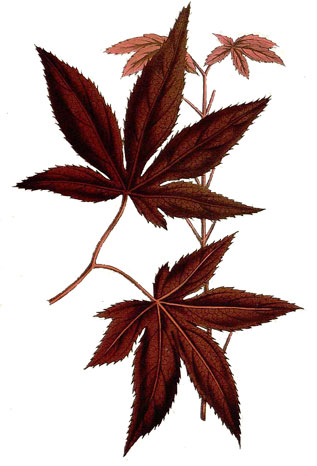
Quick Facts
- Plant Type: Small deciduous tree
- Tree height: About 25 feet (varies by selection)
- Tree width/spread: 20 feet (varies by selection)
- Hardiness: USDA Zones 5 to 8
- Flower Color: Insignificant
- Sun/light exposure: Full sun to partial shade
- Water requirements: Moist conditions, can tolerate some drought
- Seasonal Interest: Brilliant spring and fall leaf color
Japanese Red Maple (Acer pamatum var. atropurpureum)
The Japanese Red Maple is a tree that has been cultivated for over 300 years. It is a cornerstone of Japanese gardening. With its magnificent leaf color and shape, Japanese Red Maple is ubiquitous in Japanese gardening. They are also a popular bonsai plant.
The first Japanese Red Maple reached England in 1820 and was named Acer palmatum after the hand-like shape of its leaves. Today there are hundreds of Japanese Red Maple cultivars which vary in their growth form, leaf pattern and degree of intricacy.
It produces attractive, reddish purple foliage, especially in spring and fall. (Summer leaf color is often green.) Leaves are up to 4-inches in length with 5 or 7 lobes spreading like the palm of a hand.
The red, winged seeds (known as samara) are about an inch long and are formed joined in pairs as is typical with maples. Squirrels and chipmunks are very fond of the seeds. The seeds, buds and flowers are also eaten many songbirds.

